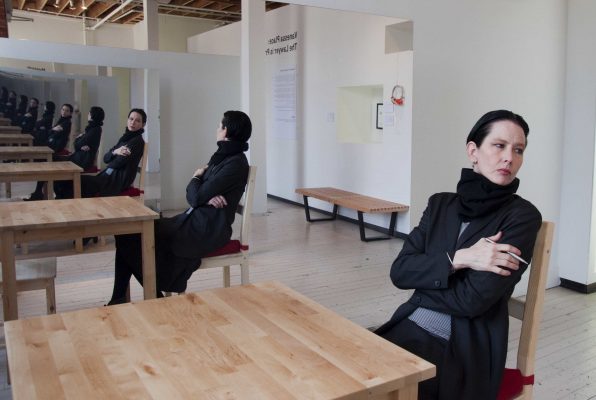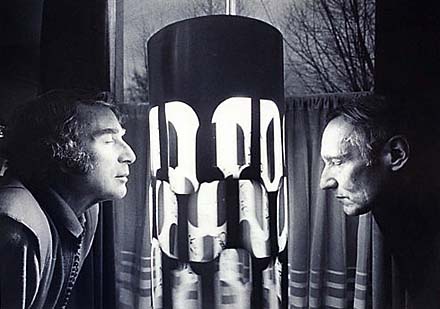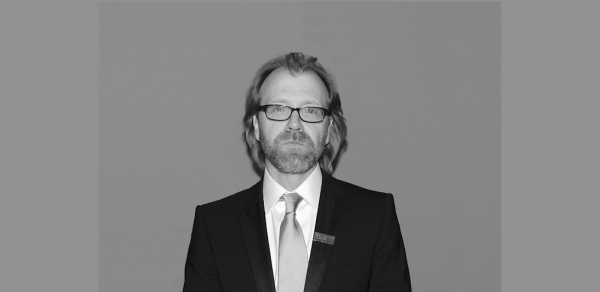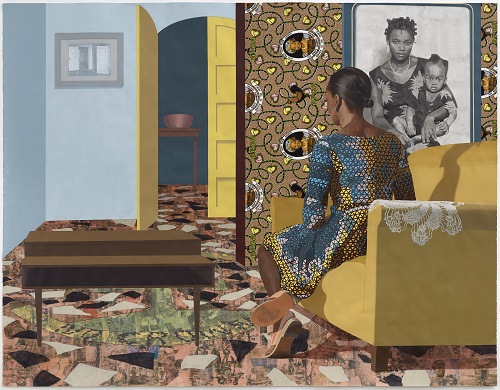Cities display a worship of history in the monuments and memorials that they choose to erect, through which the past is paraded like a religion. In his book Hope and Memory, Tzvetan Todorov writes: ‘While history makes the past more complicated, commemoration makes it simpler, since it seeks more often to supply us with heroes to worship, with enemies to detest; it deals with desecration and consecration’. But in Berlin the past is a very strange and warped place – not one to celebrate per se. In its monuments and memorials one sees a more agnostic effort to come to terms with a recent past filled with fascism, fanaticism and false futures.
As in any major European capital, Berlin is full of the familiar vestiges of wars waged and won in the name of colonial ambition. Out of the centre of Tiergarten Park rises the Victory Column, presiding proudly over the traffic island. The huge image of winged victory has one hand held aloft against the traffic, the other holding a staff like a magnificent lollipop lady. On successive corners of the Victory Column roundabout are several large bronze effigies of Prussian generals, but the names have been removed and their gestures of victory are pathetically obsolete. Nearby is a huge statue of Otto von Bismarck, the author of German unification and the first Chancellor of the German Reich. He struts boldly, flanked by allegorical figures: atlas holding up the world, Siegfried forging a sword to celebrate German industrial might, Germania pinning a panther symbolising the suppression of rebellion, and a sibyl reclining on a sphinx reading the book of history. These boastful symbols seem absurd given how the twentieth century unfolded.
Berlin’s is a confused landscape that commemorates both victors and victims, both German and other.
In his work on public memory and national identity, Pierre Nora writes about our obsession with commemoration that has come to dominate ‘all contemporary societies that see themselves as historical’. In Nora’s eyes, monuments such as the Bismarck statue were designed to align history with the sanctioned version, to boost the national ego, and to ensure that the present and its projected future lives up to a past that had been declared ‘glorious’. But such bombastic nineteenth-century monuments as these were rendered ironic within a generation. This is the conceit of any structure that architects imagine looking down on future generations to remind them of the past, as they slip and slide quickly away from the intentions with which they were wrought.
Both the Victory Column and the Bismarck memorial were moved from their position in front of the Reichstag to their current location by Hitler in 1938 to make space for his never completed Welthauptstadt (World Capital) Germania. The Nazis utterly understood the power of the symbolic gesture, the need for a political agenda to have an aesthetic reflecting the totalitarian world they sought to create in every last detail. Nothing represented this idealistic and aesthetic control more than Hitler’s plans for Germania.
The architectural legacy that the Nazis bequeathed to modern-day Berlin is as much reflected in empty spaces as it is in the defaced remnants of their past. In no other city is there such a strange emptiness in the centre as in Berlin, particularly in the area surrounding the Reichstag where Hitler and Albert Speer planned large-scale buildings for Germania that turned out to be impossible to erect. One plan included the building of a triumphal arch based on the Arc de Triomphe in Paris but almost a hundred metres high, so large that the Napoleonic monument would have fitted inside its opening. But Berlin is a city built on sand and would never have been able to support such a structure, as demonstrated on the site where the arch was planned where an experiment took place. Tucked away behind some trees off Dudenstrasse, on the border between Kreuzberg and Schöneberg, stands the Schwerbelastungskörper (Heavy Load-Bearing Body) – a huge concrete cylinder designed to test the endurance of the city’s soft ground. It sank 18cm in the first three years, but still stands today, a monument to failure.
Down the road from this concrete monolith is Speer’s masterpiece: Tempelhof Airport. There is something about the proportions of this building that inspires an oblique terror. The windows yawn imposingly around an amphitheatre of long black spaces, abstractly evoking a circle of standing stones. Everywhere one sees the gates and flagstaffs that were built to display swastikas, and the shape of the courtyard is perfect for nationalist display. The Nazis understood the need to create spaces where they could act out their aesthetic vision – Tempelhof will never shake this twisted theatricality. Yet the monument outside the airport commemorates the Berlin airlift which saved West Berliners from the Soviet blockade. Berlin’s is a confused landscape that commemorates both victors and victims, both German and other. Countless structures have been renovated and rechristened as history dealt its successive blows.
Speer promoted the idea of ‘Ruin value’ or Ruinenvert, meaning that buildings such as Tempelhof were deliberately reinforced so that over the thousand year rule of the Third Reich they would ruin well. In his memoirs, Speer discussed Hitler’s belief that ‘all that remained to remind men of the great epochs of history was their monumental architecture’, but the buildings left behind by the Nazis are monuments to hate and horror and a remarkably short-lived vision of the next thousand years. Some of their buildings were reused, most destroyed, and many never built. Some, like the Olympic village near Spandau, are now abandoned, left to rot and ruin in a distinctly inglorious fashion.
Perhaps it is important to make a distinction between a monument and a memorial as the two words are so loaded. In German, the word Denkmal is used for for both. Denken is the verb to think, meaning that Denkmals are ‘think-things’ or ‘markers-of-thought’. In English, two different words are used that are in many regards interchangeable. Yet after the Second World War, our needs from these kinds of structures seemed to be irreconcilably altered as a synthesis occurred between the two. Monuments by definition are imposing structures, constructed on a ‘monumental’ scale, usually to commemorate glorious military victories. Memorials are generally smaller and more humble structures, built to provide a space for expressions of collective memory. They have a specific human function in this sense, whereas monuments, for the most part, serve more politicised ends. Berlin’s is a landscape of monumental memorials.
There were two different approaches to building monuments and memorials in the post-war, pre-wall era. In the East, the Russians assumed aesthetic control where the Nazis left off. East Berlin became a Soviet showpiece, from the elegant arcades of Karl Mark Allee to the absurdly ostentatious yet thrilling sight of the Fernsehturm. The Russians also built the largest and most ambitious war memorial in Europe: laid over the bodies of 7,000 Russian soldiers, it was built by the collective efforts of 12,000 German workers to commemorate some twenty-five million Russians who died during the Second World War. Walking towards the memorial feels like stepping onto the set of a Stalinist science-fiction film. Again, here is a vision of the future that now looks much outdated in this, the last of the old-style memorials. Its Stalinist rhetoric is so chilling and its scale so superhuman that, after the initial gawp, one is left cold. It is an outrageous political theatre-piece, with its intentions and effects far removed from the human cost of war for both victors and victims. We have come to recognise that somehow in this war all were victims, but the Russian War Memorial recognises only the ‘cost of victory’. It is a structure motivated by a terrible concoction of grief and revenge. Its scale is a deliberate contrivance lest anyone forget the sacrifice the Russians made, yet it is sinking into that same Berlin sand that troubled Albert Speer. It recently received a ten-year long renovation from the Berlin government, and will require constant upkeep.
In West Berlin, a more pragmatic approach was taken. The most iconic post-war memorial in the post-war West was the Kaiser-Wilhelm-Gedächtniskirche. Now located in the heart of former West Berlin, it is a beautiful old church that was hit in an allied air raid and has been preserved in its half-ruined state. Its steeple towers over huge signs for Mercedes and other icons of capitalism like a piece of moth-eaten brocade. After the fall of the Third Reich, West Germans were unable to build structures with the same ego as their predecessors and that role fell to the Russians. The memorials that began to crop up in the West were meagre, almost tacky, semi-figurative and deeply sentimental. They struggled with how to represent this unspeakably sensitive period of history, and began by passing laws on how not to represent it. There is still a law against directly representing loaded symbols from the country’s Nazi past and it is completely illegal to display swastikas anywhere in any way, shape or form. During this process of denazification the German flag was frowned upon for a long time, as was the use of the eagle as a symbol despite its Prussian origin. The 2009 opening of Berlin’s own branch of Madame Tussauds demonstrates how sensitive the Nazi period still is in Germany. In an effort not to shy away from Germany’s past, the museum included a waxwork of Hitler in his bunker in the last days of the war, depicted as suffering a final humiliation and defeat. At the grand opening, one irate German took an axe to this waxwork and decapitated it.
After the Nazis, the main task in Germany has been how to go about memorialising the legacy of trauma and destruction that the Nazis bequeathed. Given the amount of blood on German hands after the war, this is a very controversial issue. Growing up in Britain, one is used to seeing a bronze memorial in every city to commemorate the lives of those lost in the various war efforts. And Berlin looks, on initial glance, so like any other major European capital that it takes a while to figure out that there is no memorial for the millions of Germans who died in the two great wars fought on this continent last century. To think that the Germans started both wars and lost them does not account for the absence of a memorial. It causes one to think very deeply about the role of a memorial – monuments are for the victors, but memorials are for those who lost their lives. Regardless of the outcome, memorials are there for their loved ones left behind to direct their grief towards. Without them, how does one grieve such a loss? Though there is nothing to be found in the city centre, one does comes across expressions of grief in the privacy of graveyards. Hidden away in a graveyard in Wedding is a garden with named plaques of three-hundred-odd German soldiers. Some memorials for the First World War exist – mostly hidden outside the city centre – that have been ambiguously rededicated to those lost ‘im jeden krieg’ – ‘in each war’.
The question of victimhood is also a sensitive one. Publicly the Germans built memorials for ‘victims of the Nazis’ which include those Germans who opposed Hitler. Many Germans consider Germany a ‘victim’ of Hitler, and many more consider it a victim of the USSR. Now that there has been – to some degree – a reclamation of victimhood and a suitable period of penitence has passed, the Germans, and especially the Berliners, can build monumental memorials that better express these historical paradoxes.
The structure that Berlin is most famous for – the one that it fell victim to and that really made Berlin the strange place it became – is the Berlin Wall. This is a structure, neither monument nor memorial, that was erected in the middle of the night in 1961 without aesthetic consideration. It was part of what Churchill so elegantly metaphorised as the ‘iron curtain’, but was in fact just a concrete wall with no edges to make it harder to climb. A wall that became, on the West side, a canvas for the city’s graffiti artists. Still in Berlin there is a huge graffiti culture, as though once the wall was brought down graffiti spread over any and every other surface it could find.
It seems enduringly strange that something so simple as a wall could be as effective as it was. Walls of this ilk, designed to separate and to contain, are very potent, and for those who live in their shadow they become walls of the mind. And though the Berlin Wall is long gone, twenty years ago last year, the scar it left both physically and mentally is still very much in evidence. For starters, we talk about the Eastern and Western parts of the city with no relation to the geographic east and west and the city thrives off its ‘tourism of totalitarianism’. Checkpoint Charlie, in the centre of Berlin, is a strange theatre-piece of pantomime purgatory, where immigrants are paid to dress as border guards – in the process of re-enacting what must have been a tedious task of checking papers – in photographs taken with an audience of tourists bussed in from all over the world to see this junction that once separated two worlds within one city.
The pieces of the Wall that are left standing have become memorials to those who died trying to climb it and to those whose lives were taken away twice: once when it went up, another when it came down. The East was then absorbed and dissolved into Western Europe – a loss that many East Berliners mourn but which goes unmemorialised.
This structure also seems to invest so many other structures in the city with its symbolic aesthetic. There are many public art sculptures all over the city that seem suggestive of the wall-that-once-was, evocative of this structure of separation; or maybe just knowing about the wall makes one see it everywhere. It is still, somehow, inescapable.
There are other Cold War remnants which, like those of the Nazis, have become memorials by virtue of their ruin; monuments in remembrance of destroyed futures. The most famous of these is Teufelsberg (Devil’s Mountain), a palimpsest of the past that towers over the Grunewald. It is an old Cold War listening station that is built on top of a rubble mountain. There are several of these in Berlin and across Europe, huge mounds where all the debris from the war was collected as the continent rebuilt itself. But this rubble mountain is more special as it buried a Nazi military college designed by Speer. The Allies tried to destroy the school with explosives but it was so robustly built that they failed, so buried it instead under a mountain of rubble and built a listening station on top of it so they could spy on the Soviets. And there it still stands like a decaying spacecraft, eyeless, earless and graffittied it presides over the city, preserving Speer’s ruin in a way he could never have hoped for.
Berlin saw more conflicting ‘futures’ imposed on it than any other Western capital in the last century and the monuments that it has constructed at the beginning of the twenty-first century are a painstaking testament to this. They display and attempt to rethink both monument and memorial, to re-evaluate their social functions and how these should be communicated. One feels this keenly in the contrast between the statue of Bismarck and the nearby memorial for homosexuals killed by the Nazis – a discrete concrete cube with a small window into a video of two men kissing designed by the artists Elmgreen and Dragset.
Berlin is an international centre for contemporary art by virtue of its chequered past. Half-deserted after the fall of the Wall, it began to attract artists in droves. In many ways the language of contemporary art has come to define the monuments that the city now builds. The most extraordinary example of this is the Holocaust memorial or ‘The Memorial for the Murdered Jews of Europe’. It covers a 19,000 square metre site next to the Brandenburg gate and consists of 2,711 concrete slabs – one for each page of the Talmud – arranged in a grid. The ground into which these grave-shaped slabs are set slopes dramatically, but they all stand at perfect right-angles. At certain points, the slabs stand twenty centimetres high, and at others they tower at 4.8m. The effect is deeply and viscerally disorientating. Designed by the architect Peter Eisenman, its stated aim was to create an uneasy and confusing atmosphere to evoke a supposedly ordered system that has lost touch with human reason. The memorial achieves this as the cold stony paths are filled with nervous laughter as people enter and lose each other instantly. At first there were complaints that children were laughing too loudly for such a serious place, but these children will never in their lives forget the experience of being in that memorial. It has served its function for that very reason, but controversially, nowhere inside the memorial or around it does it say what it commemorates.
This oblique suggestiveness, that avoids the figurative at all costs as a cheapening of the complex cloud of history that hangs over the present, seems to take directly from the strategies of contemporary art that the city has become famous for. Outside the Humboldt Law Library, the memorial for the books burned on that spot is set into the ground. It is invisible until one stands right on top of it, above a white room inside of which are rows and rows of empty shelves. Again it is the power of emptiness that speaks volumes, a negative representation of what was lost.
One of the most poignant memorials in the city in the series of ‘Trippstones’, which is also an artist’s project. These stones are the size of the standard Berlin cobblestones but cast in bronze. They have inscribed on them the names of Berlin Jews and are laid outside the houses where those people once lived. These bronze cobbles are slightly raised above street level, but only so much that they subtly interrupt your feet as you walk over them. Thus, the memory floods into your everyday experience of the city, forcing you to stop to consider past lives lost and ordinary homes torn asunder.
It is Berlin’s unique history that makes its present so interesting and attractive to the hundreds of people who move here each year in search of an alternative to other cities. But now it feels as though Berlin is crystallising into something more homogenous, palpable in the shift towards reconstruction. Reconstruction is a symptom of the city’s increasing wealth as abandoned buildings are slowly being cleared or reconstructed. The most controversial instance of this phenomenon was the city’s decision to destroy the Palast Der Republik – a DDR show piece on Unter Den Linden that was as loved as it was ever loathed. The space is as yet empty but the city is planning to rebuild the Schloss, a traditional nineteenth-century state building that was destroyed in the Second World War – a monumental memorial to amnesia that seems so thoughtless in a landscape that is otherwise so thoughtful. But in an added twist, as this is Berlin and one cannot cast a stone without it ricocheting off all the conflicting histories, when excavating the site in order to lay the foundations for this new-old building, archeologists unexpectedly uncovered a collection of modernist art that the Nazis had confiscated and put on display in a travelling exhibition as examples of ‘degenerate art’. This collection was believed to have been lost until it resurfaced like fragments of a Greek temple come to jeer at the conceits of the present administration.
No matter how one represents it, history has a way of ironising all our efforts, not least because the structures we build to remember it will inevitably decay. A few weeks ago a German newspaper reported the appearance of cracks in the Holocaust memorial from the cold weather. And we too will erode along with all our monuments and memorials. If there’s one thing that we can learn from the past it is that there is nothing as unreliable as the future.




